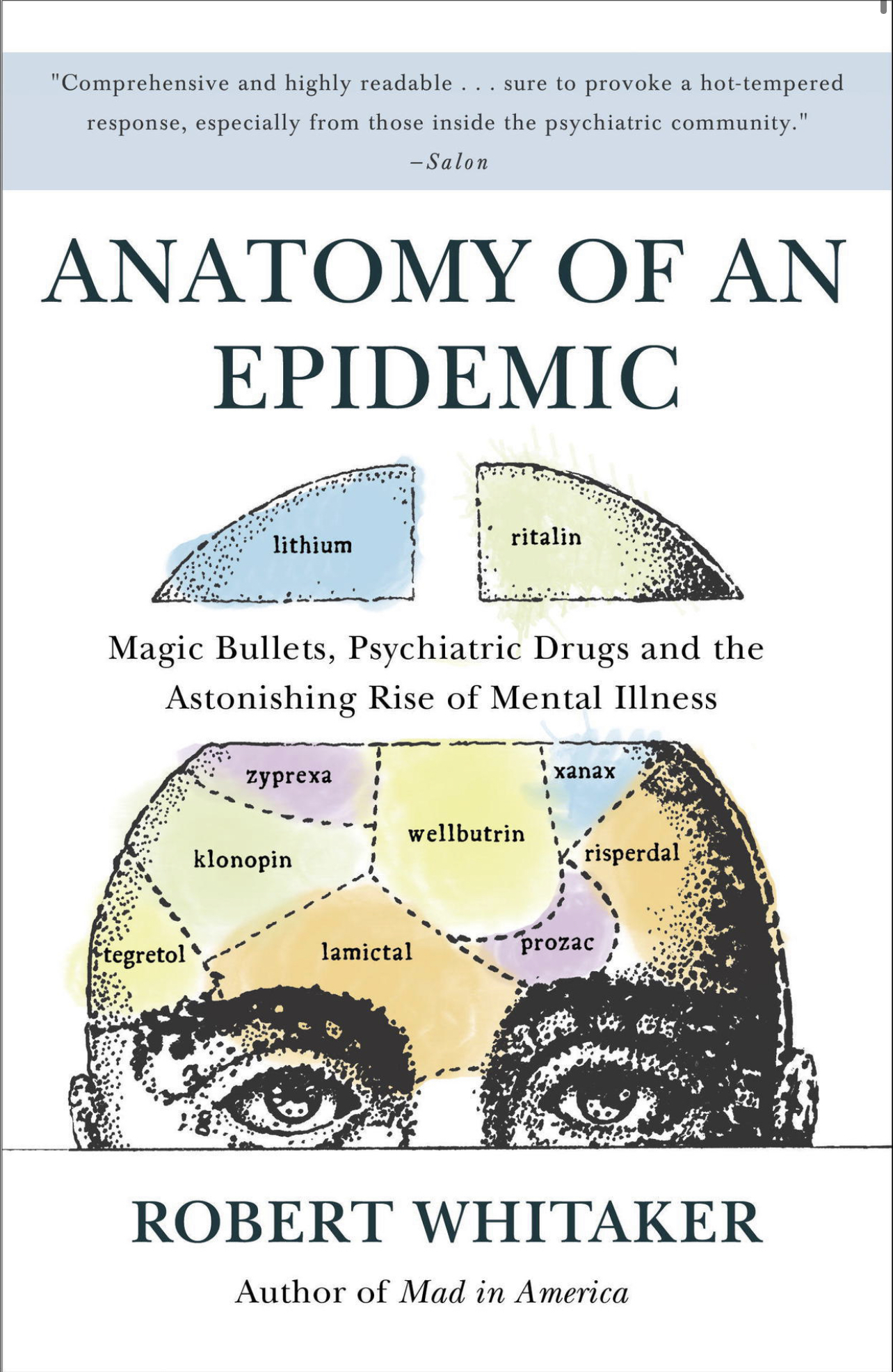Anatomy of an Epidemic Magic Bullets, Psychiatric Drugs, and the Astonishing Rise of Mental Illness in America
Author: Robert Whitaker Publisher: Crown Publishing: New York , NY. Publish Date: 2010-3-31 Status:⏳ Rating: 5/5
Nebulas
- Anatomy of an Epidemic Chapter 1. A Modern Plague
- Anatomy of an Epidemic Magic Bullets, Psychiatric Drugs, and the Astonishing Rise of Mental Illness in America Chapter 4. Psychiatry’s Magic Bullets 4
- Anatomy of an Epidemic Magic Bullets, Psychiatric Drugs, and the Astonishing Rise of Mental Illness in America 5. The Hunt for Chemical Imbalances 1
- Anatomy of an Epidemic Chapter 11 The Epidemic Spreads to Children 2
- Anatomy of an Epidemic Magic Bullets, Psychiatric Drugs, and the Astonishing Rise of Mental Illness in America 12. Suffer the Children 3
- Anatomy of an Epidemic Chapter 1. The Story That Was … and Wasn’t Told
- Anatomy of an Epidemic Magic Bullets, Psychiatric Drugs, and the Astonishing Rise of Mental Illness in America 15. Tallying Up the Profits 5
Notes
Amount: 19
- The claim that ADHD is caused by low dopamine levels is a drug-marketing claim with little evidence
- Amphetamines were first considered useful in treating hyperactive children when Charles Bradley gave them to students in 1937
- Ritalin
- SSRI
- Stimulants have been shown to subdue children and make them emotionally flat
- Schools have found Ritalin to be useful in subduing hyperactive students and making them more easily manageable
- Stimulants have been shown to not improve behavior over the long-term
- The major NIMH trail that proved the superiority of stimulants for treating ADHD over therapy did not include a placebo group and 20 percent of the therapy group were on stimulants
- In a follow up to a major NIMH trail, Stimulants showed behavioral deterioration for ADHD patients after 14 months
- Juvenile bipolar disorder first arose in tandem with stimulant and antidepressant treatment in children
- Some psychiatrists had explained away the co-arising of juvenile bipolar and childhood stimulant and antidepressant treatment by claiming that the drugs revealed an underlying disorder rather than causing it
- Amphetamines are known to induce psychotic and manic episodes
- There are many reports of children experiencing psychosis during stimulant treatment for ADHD
- Stimulant treatment causes patients to cycle through arousal and dysphoric states on a daily basis
- The symptoms of stimulant treatment for ADHD closely resemble those of bipolar disorder
- Long-term administration of antidepressants in children show risk for the development of bipolar disorder
- A majority of bipolar cases were shown to be preceded by stimulant or antidepressant
- Atypical antipsychotic
